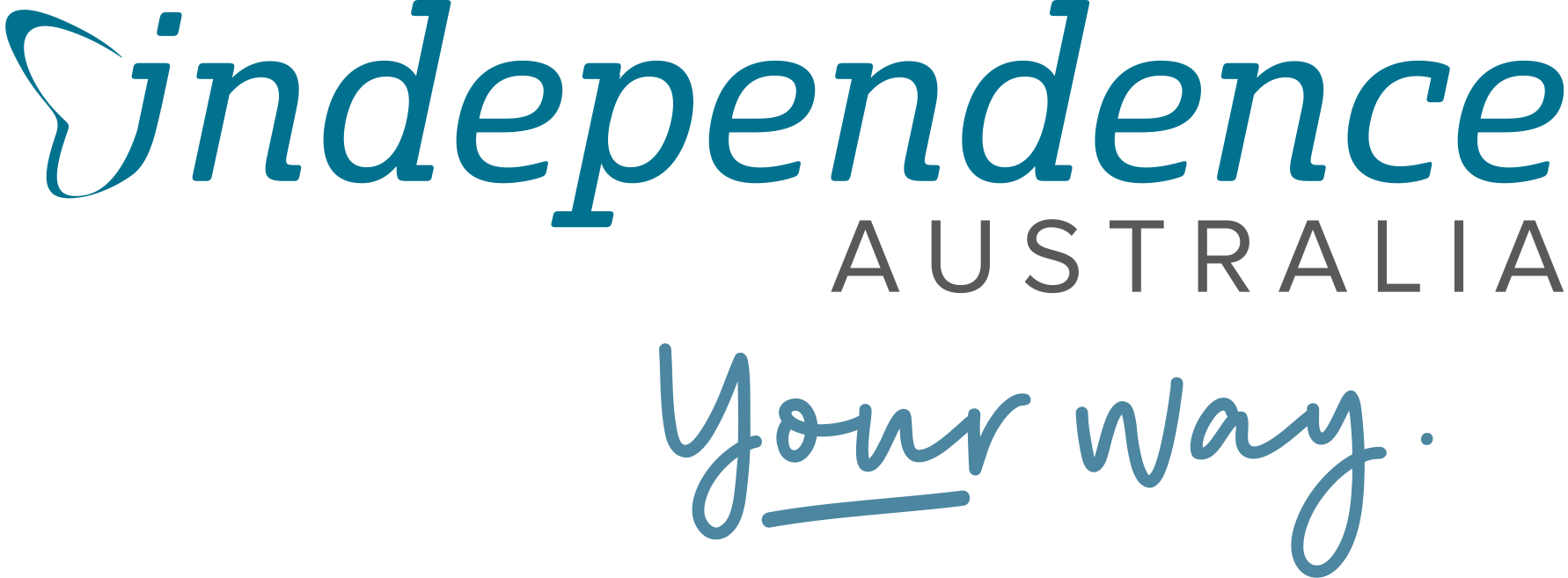Interview: Emiko Artemis
Emiko Artemis is a South Australian based artist working across multiple mediums. Last year, Emiko was the recipient of an Arts Access Australia travel grant to attend Meeting Place, a forum hosted by Arts Access Australia that brings together local, national and international arts and cultural leaders, arts workers and artists with disability, to present, perform, discuss and debate the latest in access and inclusion in the arts.
Inform caught up with Emiko to discuss their work and influences and why forums like Meeting Place are so important.
Can you tell us a little about yourself?
I am a mid-career artist working across media; however, my art generally finds its home in photo media. I have been working professionally as an artist since 2012, when my post graduate studies were completed, and I gained my PhD.
While I am now based in South Australia, I have lived in America and in Tasmania, Queensland, Victoria and NSW. As well as my art practice, I also have four children and a grandchild and I work in the community sector also, so I need to be very adept at juggling different hats and managing my time well. I am passionate about the arts and its role in society.
You’re a visual artist, whose work examines the intersection of bodily movement and space. Can you tell us some more about that?
I am very interested in boundaries—the borders we put up as individuals and as a society. Boundaries take so many forms: physical, geographical, cultural, emotional spatial. In order to understand and explore boundaries, you need to understand and explore how the body moves in space. By starting with the boundaries of the internal body and external space around it, with bodily flesh as the boundary point, you can begin to explore boundaries on a deeper aesthetic and psychological level.
The starting point for me though is the self. I use different strategies to disturb the boundaries of flesh and space, such as coverings and masks. I then take this disturbed flesh/space dynamic into different situations, like a forest or an ocean. My photographs are quite often a record of this investigation.
I think we often move through our world so quickly. In my work I try and stop and explore the moments of movement. In phenomenological terms, I try and explore the active moment, the enlivened point of action and movement. While this on its own is a very individual concept, the ideas I explore—boundaries and spatial interaction—are ideas which have cultural implications pertinent to our world today.
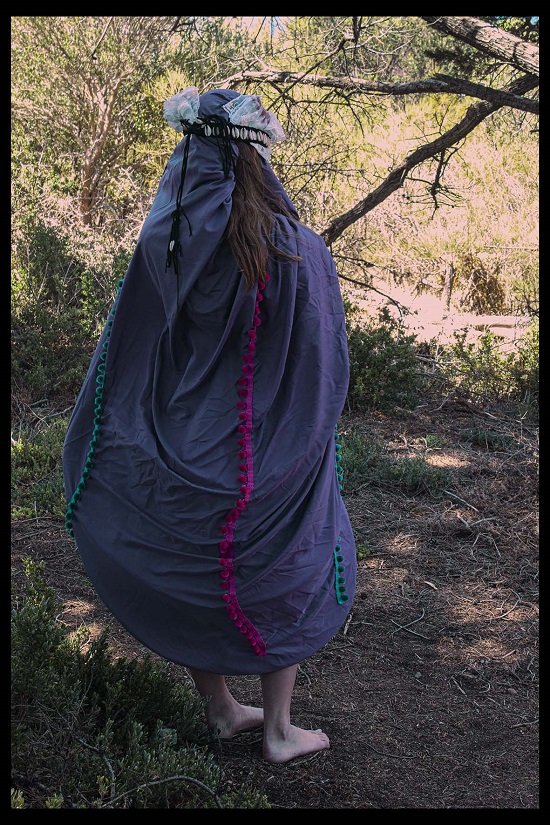
Brook by Emiko Artemis.
How has your disability influenced and/or impact your work?
I have lived with my disability in various degrees for most of my life now, so my world view is very much shaped by it. I don’t think I would be the person I am without my disability. It has given me a unique perspective on the world both through my interactions with other people and in my own personal perspectives. I often say my brain is knitted up differently and I really feel this is an accurate way to explain things. I have many times sat on the outside of society which allows me to explore social ideologies differently to someone who may be immersed in society.
On a more fundamental level, certain events have occurred as a direct result of having my disability which have pushed my life in particular directions.
So, my work has been affected three ways: through my own unique perspective that shapes my perception, through my interactions with other people that add to my understandings and through actual events that have occurred due to my disability.
I don’t make work directly abut my disability, but my work wouldn’t be what it is if I didn’t have it! I am glad to have my disability as I feel I can offer an alternative viewpoint when there is so much gentrification and subjugation of differing voices going
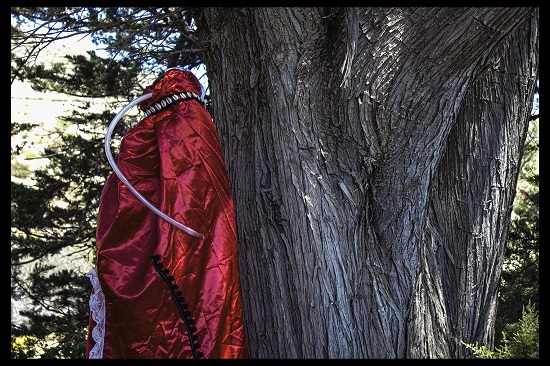
Crest by Emiko Artemis.
Are there any artists who work has been important or influential or inspiring for you?
I most definitely have my favourite artists, my hit list of artists whose work I adore. There are quite a lot but at the top would be Frida Kahlo, Tracey Moffatt, Sally Smart, Annette Messenger, Kiki Smith. I could go on with many more, I have a large list!
The artists I’ve mentioned have both inspired and influenced me in different ways. Frida Kahlo was the artist who, way back in 1987, first made me realise that you could use art to say great things in personal and beautiful ways. I love it when art is quirky, different, courageous and takes on big ideas. And I love art that tells a story through personal experience. I think as a woman, it is important to tell stories with our own words. History has for so long written the stories of women, so we need to take up the pen (or brush or whatever your medium is) and tell our own version. The artists I have looked to over the years for inspiration have done this.
Your content goes here. Edit or remove this text inline or in the module Content settings. You can also style every aspect of this content in the module Design settings and even apply custom CSS to this text in the module Advanced settings.
You were a recipient of an Arts Access Australia Travel Grant to attend Meeting Place. What was the experience of attending Meeting Place like?
Meeting Place for me was a pivotal moment. Being surrounded by a mass of incredible creative people, sharing, laughing, talking, connecting, it was unbelievably amazing. As I said earlier, I have often sat on the outskirts of society and I spent a good number of years trying to form myself into what I thought I needed to be in order to join everyone else, then not really understanding why it wasn’t working.
At Meeting Place, I had a revelation. I realised that by trying to squeeze myself into someone else’s mould, I was silencing my own voice. I can’t be a part of something if no one can hear me! Meeting Place allowed me to feel ok to be me, that I didn’t disappear or melt into a puddle of water and that in fact I had important things to say. In addition, Meeting Place allowed me to make connections, to find pathways I didn’t know about, to see how other creatives were doing things and get some really good information, ideas and leads to follow on with.
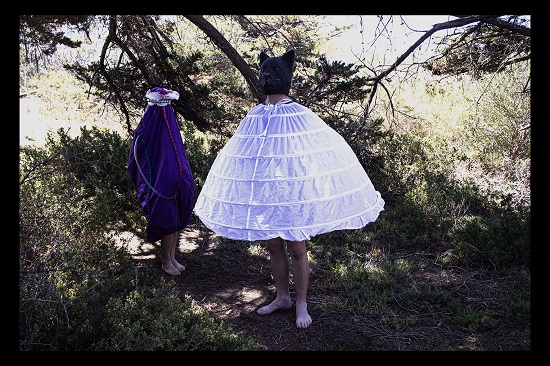
Fissure and Dell by Emiko Artemis.
Why do you think events like Meeting Place important for cultural leaders, arts workers and artists with disability?
We need each other! Everyone’s experience of disability is unique but often society will want to mash disabilities into the one easy to hold basket. By coming together and sharing our ideas, stories, inspirations, we can just get down to it without all the other stuff. Meeting Place makes space for diversity and brings down the barriers that people often face.
Having a disability can be isolating but it is so important to keep connected, to keep up to date with the latest research, information, innovations. Meeting Place brings all this together and creates ways to keep the love going after its ended. It can be hard having a disability sometimes so events like Meeting Place are important to get our voices heard, to empower each other, to connect and reconnect. Also, it’s heaps of fun! We all need fun!
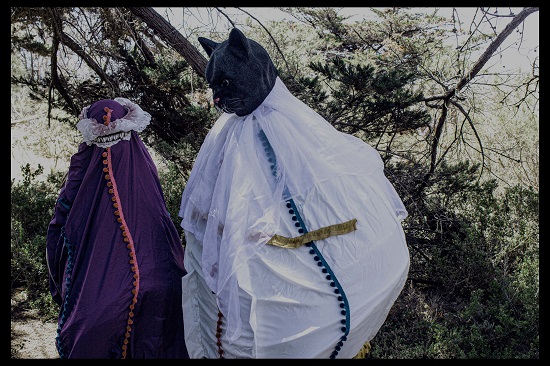
Fjord and Swamp by Emiko Artemis.
What are you working on at the moment?
As usual, tons of things! I’m currently researching the grotesque. It’s very interesting and relevant to my ongoing explorations of bodily movement in space. The grotesque really subverts our nice ordered categories! I’m also making some new costumes and masks for my next body of work. And I’m always drawing, on big and small scales. I’ve been getting back into painting also which has been fun. Being at home more means I’m venturing back into things I haven’t done for a while. I had a couple of performances lined up which had to be put on hold as they were in public spaces so when the Covid-19 restrictions are lifted I’m hoping to get those happening.
So, busy busy busy!
You can see more of Emiko Artemis’ work at https://www.emikoartemis.art/
Ready to read more? Try these Inform links:
Student makes custom controllers for people with disabilities
